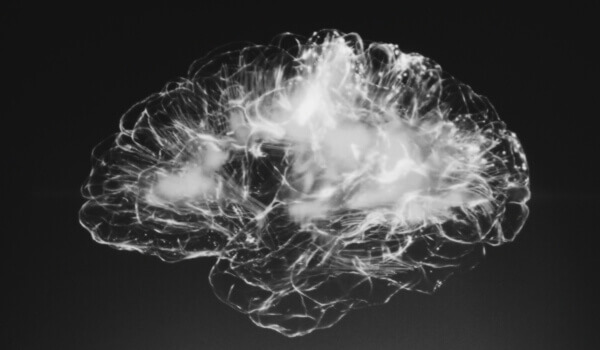Playback speed:
What would you do if you had a brain? *
By J. Jeff Toler for Shenandoah Christian Alliance j.toler@sca4christ.org
The late Jeanne Robertson was renowned for her homespun humor and folksy storytelling. One of her best-loved routines explored the differences between two ways of thinking: the creative and spontaneous versus the precise and methodical.
She jokingly dubbed her husband, Larry, “Left Brain” because of his methodical, logic-driven approach to life. According to Robertson, left-brained people love order, thrive on specifics, and prefer to color only inside the lines. “You know that box people tell you to think outside of?” she quipped. “They’re perfectly content to stay inside it.”
In one story, Jeanne handed her comedy routine to her husband and asked, “Left Brain, do you think this is funny?” After ten minutes of silence, she realized he was still deeply engrossed in the page. When she finally prompted him, he replied, “I haven’t read it for funny yet—I’m still fixing the commas.”

Jeanne Robertson
Robertson was one of my favorite comedians to listen to on The Comedy Channel during my drives to and from work. I always found the left-brain/right-brain concept amusing.
But as it turns out, this idea may be more myth than reality.
The Myth and the Facts
The popular belief is that people are “left-brained”—logical, analytical, detail-oriented, and good at math and language—or “right-brained”—creative, intuitive, emotional, and artistic. This concept suggests that each hemisphere dominates certain personality traits or cognitive styles and that people favor one side over the other.
However, recent work by researchers like Dr. Simon Baron-Cohen has shown that the left brain versus right brain theory is largely a myth, or at least a significant oversimplification of how the brain actually works. Modern neuroscience reveals that:
- Both hemispheres work together on almost all tasks.
- Language is typically more left-lateralized (especially in right-handed people), and spatial awareness can be more right-lateralized—but these are specific functions, not whole personality profiles.
- Creativity, logic, emotion, and reasoning require integration of both hemispheres.
- Brain imaging shows that complex activities—like playing music, solving problems, or reading—involve multiple regions across both sides of the brain.
The myth originated from misinterpretations of 1960s and 1970s research on split-brain patients (those who had the corpus callosum severed to treat epilepsy). While the findings were fascinating, popular media exaggerated them into sweeping claims about personality.
Why Does the Myth Matter?
Believing the left/right brain myth can lead to:
- Stereotyping people’s abilities or learning styles.
- Misguided educational strategies—an important point when reconsidering the educational philosophies of figures like John Dewey, Paulo Freire, and Benjamin Bloom.
- Limiting self-understanding and personal growth.
While some specialization exists between the hemispheres, the brain is highly interconnected. We aren’t “left-brained” or “right-brained”—we’re whole-brained individuals.
Baron-Cohen and Brain Specialization
Dr. Simon Baron-Cohen, a prominent psychologist and autism researcher, does not focus on the left/right dichotomy in the traditional pop-psychology sense. Rather, he works with theories of brain specialization related to empathy, systemizing, and autism spectrum conditions.
Baron-Cohen is best known for his Empathizing-Systemizing (E-S) theory, which proposes that individuals can be understood along two main dimensions:
- Empathizing: The ability to identify with and respond to others’ emotions (associated more with social brain networks).
- Systemizing: The drive to analyze or construct systems. (linked with rule-based, analytical thinking)
On average, females score higher on empathizing, while males score higher on systemizing. People with autism spectrum conditions typically have a “hyper-systemizing” profile and may find empathy more challenging.

Dr. Simon Baron-Cohen
Although Baron-Cohen acknowledges some lateralization (dominance of function in one hemisphere), he does not reduce his model to the simplistic “left equals logical, right equals emotional” formula. Instead, he focuses on specific neural circuits and regions—such as the amygdala, orbitofrontal cortex, superior temporal sulcus (the “empathy circuit”), as well as the prefrontal cortex and parietal lobes for systemizing behavior. These involve both hemispheres.
His research on autism highlights differences in neural connectivity rather than just lateralization. For instance, individuals on the autism spectrum often show reduced activity in areas associated with empathy, such as the medial prefrontal cortex (in the frontal lobe, near the midline), and the temporoparietal junction (located at the intersection of the temporal and parietal lobes on both sides of the brain). Conversely, the inferior parietal regions, which are connected to systemizing, may show increased activity.
Baron-Cohen’s work demonstrates that complex traits like social understanding and analytical thinking rely on distributed brain systems, not on isolated hemispheres.
Jordan B. Peterson recently interviewed Dr. Baron-Cohen on “What Do We Actually Know About Autism?” (July 14, 2025), discussing topics such as theory of mind, the differences between cognitive and affective empathy, the evolutionary roots of invention, gender differences in cognition, and how autistic traits relate to creativity and pattern recognition. They also explored the darker side of empathy deficits—including psychopathy and cruelty—raising important questions about compassion and human development.
Rethinking the Brain and the Mind
The more we learn about the science of the mind, the more we may be approaching either a dramatic turning point in human history or a new spiritual awakening. After a century of ideological indoctrination that has undermined education and social cohesion, such insights press upon us to rethink psychology and our understanding of both the mind and the brain.
In his book “A Whole New Mind: Why Right-Brainers Will Rule the Future,” Daniel Pink argued that future success would come from cultivating six creative aptitudes: design, story, symphony, empathy, play, and meaning. Pink compared this new “Conceptual Age” to previous eras of great transformation, such as the Industrial Revolution or the Renaissance.
Ironically, Pink predicted that “left-brained” professions like programming and computer coding would dominate computer age employment. But now, artificial intelligence and large language models are threatening those very same professions. Despite his secular perspective, Pink could only sense the need to use the mind as a divine gift, and that as image-bearers, we are called to something higher.
- “Do not be conformed to this world, but be transformed by the renewal of your mind, that by testing you may discern what is the will of God, what is good and acceptable and perfect.” —Romans 12:2 (ESV)
* Said Dorothy to the Scarecrow in “The Wizard of Oz.”


Totally disagree. Obviously, as stayed, no one is 100% left or right dominant, but dominant is the key.
If you worked around engineers, you’d know this is a fact. Ditto for the artsy crowd.
I work in construction and the architects/engineers (left brain dominant) are polar opposites of the interior designers (right brain dominant) every time.
If you manage people, you’ll do well to recognize this. Not as an jronclad judgment, but as a guide. I see it in my own life and in that of others.
A wise pastor once told me the number one problem in managing staff and church members is expecting something out of them that they can’t do. This is where this comes in. Proverbs 22:6, according to Charles Ryrie and others, talks a lot the the child should go. We are preprogrammed far more than we like to admit.